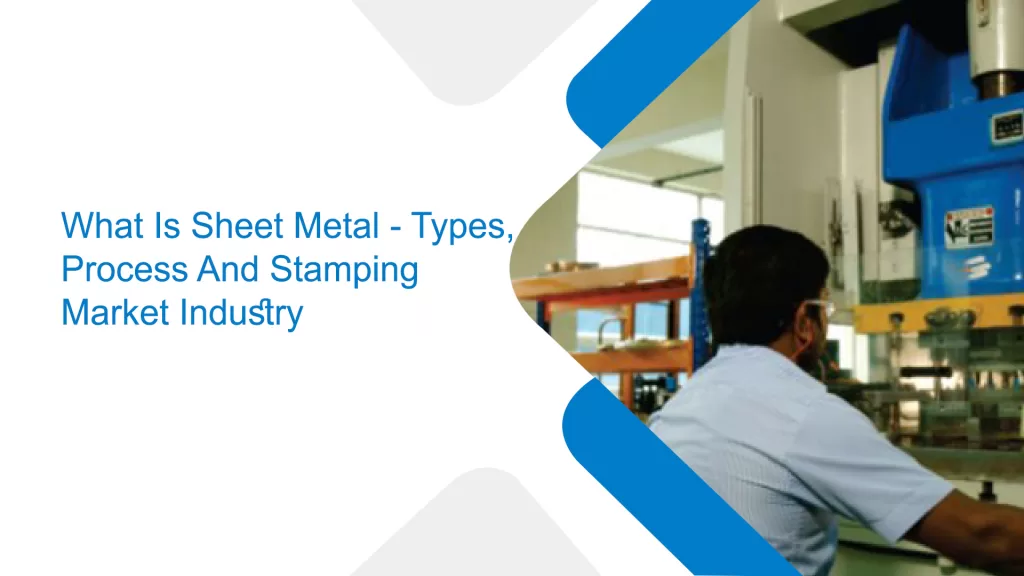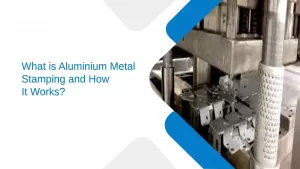What Is Sheet Metal – Types, Process And Stamping Market Industry
- Sheet Metal |
- Apr 7, 2025

Sheet metals are used in various applications. It includes the construction and aerospace industries. Sheet metal is a thin, flat metal that can be twisted and sculpted into almost any shape. Each variety of metal in company stamping offers special qualities appropriate for particular applications. Working with sheet metal requires both technical expertise and practical experience. It involves both inventiveness and precision. The stamping process is a craft that combines engineering and craftsmanship. Sheet metal is essential to the construction of your surroundings. Continue reading the blog to know more about it in detail.
What is Sheet Metal?
The meaning of stamping is metal that is shaped into various shapes. Thicknesses can vary substantially. But they are commonly classified as foil or plate, with sheet metal ranging from 0.5 mm to 6 mm thick. Sheet flexibility and lightweight properties make it suitable for structural and aesthetic designs. It can be made of various metals depending on the use and required properties.
Types of Sheet Metal
There are various types of stamps. Continue reading to know more.
Alloy Steel
Alloy steel mixes different components to offer a configurable set of qualities. Carbon steel is the primary component of this material. Vanadium and nickel are frequently added for strength, and manganese for rigidity. It is also highly affordable.
Stainless Steel
This sort of sheet metal is appropriate for products that will be exposed to regular dampness. It contains chromium, a metal that considerably inhibits corrosion caused by severe or moist environments. From office buildings to kitchen sinks, stainless steel metal fabrication components can extend the life of a product or structure.
Carbon Steel
This sheet metal substance is made of iron alloyed with carbon. It is a high-strength choice. A manufacturer can select steel with low, medium, or high carbon content, depending on the intended use.
Steel Tool
Steel tool is a stiff alloy with roughly 1% carbon that is incredibly versatile. Like alloy steel, tool steel’s constituents differ in kind and proportion based on the intended use. Tool steel performs well in high temperatures and is abrasion-resistant. This sheet metal is perfect for making tools like hammers and punches.
Steel Galvanized
Hot-dipped metallic-coated sheets and electro-galvanised sheets are the two types of galvanised steel. The former is made of annealed steel that has been cold rolled. There is no zinc spangle, and the coating is pure zinc. The latter comprises cold-rolled strong steel plates coated with an iron-zinc alloy and pure zinc. This galvanised steel is marginally less expensive than electro-galvanised sheets and has greater corrosion resistance.
Process of Steel Metal
Curling: Curling is a sheet metal stamping process used to smooth down sheet metal edges that would otherwise be rough and pointed. Sharp edges with burrs are frequently present in sheet metal after it is first manufactured. Sheet metal is deburred during the curling forming process to provide clean edges.
Bending: Bending is another popular method of the metal stamping process. When bending sheet metal, businesses usually use a brake press or a machine press of some kind. After the sheet metal is positioned over a die block, a punch presses it down. Sheet metal doesn’t genuinely get holes from bending. It bends sheet metal into the shape of the die.
Ironing: Sheet metal can also be ironed to achieve a consistent thickness. For example, ironed aluminium is used to make the majority of aluminum cans. Aluminium sheet metal is ironed to produce a thinner, more consistent composition since it is too thick in its raw condition for beverage cans. In ironing, sheet metal is forced between two dies using a punch.
Cutting Using a Laser: Laser cutting has grown in popularity as a sheet metal forming technique. During the laser cutting process, a powerful laser punches holes in sheet metal. A computer numerically controlled (CNC) laser cutting machine can even automatically carry out this faster and more accurate cutting technique.
The Process of Hydroforming: Hydroforming is a popular method used in the metal stamping industry. Hydroforming entails stretching the blank across a die, just like deep drawing. What distinguishes deep drawing from hydroforming, then? The primary distinction between these two procedures is that hydroforming is done in a single phase, while deep drawing necessitates several draw reductions.
Punching: Punching is a steel metal forming process that includes making holes in sheet metal with a punch and die combination. The sheet of metal separates the punch and die. It makes a hole by pressing up and down.
Stamping Market Industry
The sheet metal stamping sector produces accurate products used in many different industries. Flat metal sheets are shaped into the required shapes using dies and stamping machines. The need for lightweight and reasonably priced components has fueled advances in stamping technology, like the incorporation of computer-aided design and automated machinery for increased precision and efficiency.
Challenges in the industry include fluctuating raw material prices and the increasing complexity of parts due to technological innovation. The sheet metal industry will continue to evolve in the future. Advanced technology meets the needs of the global world.
Winding It Up
Sheet metal fabrication is the foundation material in manufacturing. The stamping market is a crucial industry that propels accurate and quick mass production. Eigen Engineering offers the best quality steel metal. We offer the best quality sheet metal stamping at an affordable price. We work with a wide range of industries in the country. As an expert team, we work for the satisfaction of the clients. Contact us and buy the right metal for your industry!




